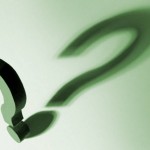 I have had many questions on this blog as well as several others that I regularly comment on regarding whether or not a person ‘has trich’. We have reviewed this information before, but it is worth restating here.
I have had many questions on this blog as well as several others that I regularly comment on regarding whether or not a person ‘has trich’. We have reviewed this information before, but it is worth restating here.
From a clinical perspective, the diagnostic criteria used by clinicians to officially diagnose trichotillomania comes from the Diagnostic and Statistical Manual of Mental Disorders, 4th edition, better known as the DSM-IV, that is published by the American Psychiatric Association. The DSM-IV diagnostic criteria for trichotillomania are:
(1) Recurrent pulling out one’s hair resulting in noticeable hair loss
(2) An increasing sense of tension immediately before pulling out the hair or when attempting to resist the behavior
(3) Pleasure, gratification, or relief when pulling out the hair
(4) The disturbance is not better accounted for by another mental disorder and is not due to a general medical condition (e.g. a dermatological (skin) condition)
(5) The disturbance causes clinically significant distress or impairment in social, occupational, or other important areas of functioning
Only a licensed mental health professional can make a diagnosis of trichotillomania. However, in layman’s terms it is likely that you have trich if you (1) pull out hair anywhere on your body and/or have an intense urge to do so, (2) have anxiety or tension before you pull or if you try to resist pulling along with some form of pleasure or relief after you pull, (3) do not have some other condition that causes you to pull and (4) find that puling or the urge to pull is negatively impacting your life.
In addition, it is often beneficial to differentiate between two distinct types of pulling – “focused” hair pulling and “automatic” hair pulling. Focused pulling involves conscious pulling, often in reaction to an unpleasant sensory, emotional or mental state. This type of pulling is best illustrated in a person that tends to have an intense urge to pull during or after stressful situations, when they are emotionally upset or when triggered by other environmental factors. Focused pulling is very hard to stop, as the underlying urge is very strong.
Automatic pulling, in contrast, involves habitual pulling that often occurs outside of your conscious awareness. Automatic pulling is when somebody pulls and doesn’t even realize they are doing it, such as while driving, while doing homework, or while talking on the phone. Normally, a person that is pulling automatically can stop once the behavior is brought to their conscious attention. However, sometimes when this occurs, the urge to pull kicks in and it becomes focused pulling.
If you think you may have trichotillomania, you should speak with your doctor about options. However, we have found the best approach incorporates properly balancing your neurotransmitter function using balanced amino acid therapy. You can find much more information about this approach on this blog.

